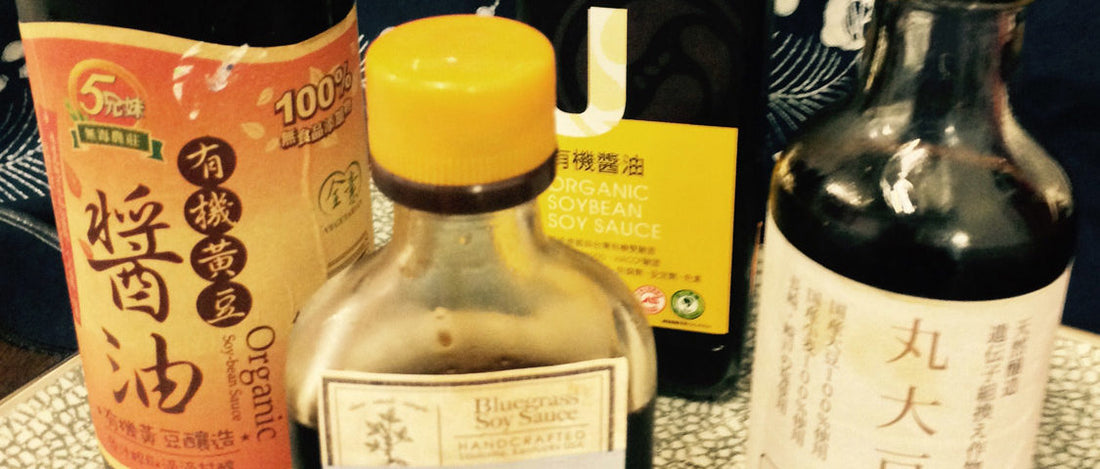It may live on the table at most any Chinese restaurant, but it serves a larger purpose than simply as a condiment. Soy sauce (or jiàngyóu in Chinese) can be considered the main foundation for flavor in a large amount of Chinese dishes whether it performs as the core ingredient in marinades, soups, or sauces.
Soy sauce’s origin dates back to 500 B.C. in China and is considered one of the oldest condiments in the world. The process of making soy sauce evolved from the need to preserve meats, vegetables, and grains with salt. The wheat was fermented with soybeans, water, and salt. Soybeans eventually became the primary ingredient in this combination that came to be known as soy sauce. Several hundred years later, this process was introduced to Japan. From there it spread to the rest of Asia. It was first exported to the U.S. in the 1800’s.
A small selection of the Soy Sauces we have tasted for China Live
Soy sauce is made by fermentation. What is considered the best kinds are naturally fermented in the open, under the sun, imparting more flavor nuances, as opposed to factory fermented ones. The traditional method, requiring several months, begins with creating a grain mash from boiled soybeans and roasted, crushed wheat. Different types of yeast cultures, bringing out different characteristics in the end product, are then added to this mash. The mixture is then brewed with a wet or dry salt brine, breaking down the ingredients through first and secondary fermentation into flavor compounds that characterize what we know is soy sauce in all its depth of flavor, or umami, glory. The resulting slurry after brewing is pressed to separate the liquid from the solids, pasteurized to remove any additional active yeasts or molds, and then finally bottled for aging or to be sold.
The alternative to brewed soy sauce requires about three days and is made from acid-hydrolyzed soy protein. They have a longer shelf life, but vary in flavor and texture from traditionally brewed types. In this process, hydrochloric acid is added to the soybeans in the initial cooking. The amino acids are removed from the soybeans, pressed, and then purified. The addition of flavor and color are introduced to the hydrolyzed protein, and the final product is then refined and bottled. Soy sauce packets are usually in this category.
Whether brewed or blended, different types of soy sauces range from plain soy sauce to light to dark and even double dark. They vary by flavor, texture, and color. Of the brewed kind, light soy sauce is thinner and lighter in color, leans toward the saltier side, and is meant to accent the flavors of what is being cooked. Blended soy sauces are brewed, but are then blended with sweet or savory elements to add a different layer of flavor, texture, or color. In this family, dark or old soy sauce, sweeter and less salty, is aged and might even have molasses or caramel color added, developing more flavors as it cooks. Other blends include mushroom or shrimp, great for finishing a dish.

